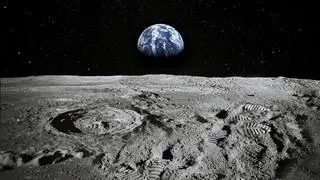India’s Mars Orbiter Mission (MOM) spacecraft has sent in its first images of the Red Planet after creating history by becoming the only such endeavour so far to have met with success on the maiden attempt.
“1st image of Mars, from a height of 7300km; with 376m spatial resolution. MT @MarsOrbiter. The view is nice up here,” Indian Space Research Organisation said today in a tweet posted along with snaps of the red planet.
India successfully placed its low-cost Mars Orbiter Mission (MOM) spacecraft in orbit around the red planet in its very first attempt yesterday, breaking into an elite club of three nations.
The spacecraft is now circling the red planet in an orbit whose nearest point to Mars (periapsis) is at 421.7km and farthest point (apoapsis) at 76,993.6km, ISRO said.
The inclination of orbit with respect to the equatorial plane of Mars is 150 degree, as intended. In this orbit, the spacecraft takes 72 hours 51 minutes 51 seconds to go round Mars once.
In the coming weeks, ISRO said in a release, the spacecraft will be thoroughly tested in the Mars orbit and the systematic observation of that planet using its five scientific instruments would begin.
MOM aims to study the Martian surface and mineral composition and scan its atmosphere for methane, an indicator of life.
The spacecraft is equipped with five instruments, including a sensor to track methane or marsh gas, a colour camera and a thermal-imaging spectrometer to map the surface and mineral wealth of the red planet.
The Rs 450-crore MOM is the cheapest inter-planetary mission. India is the first country to reach Mars in the very first attempt. European, American and Russian probes have managed to orbit or land on the planet, but after several attempts.
The Orbiter will keep moving in an elliptical path for at least six months with its instruments sending their gleanings back home.
The spacecraft was launched on its nine-month-long odyssey on a homegrown PSLV rocket from Sriharikota in Andhra Pradesh on November 5 of last year. It had escaped the earth’s gravitational field on December 1.








Comments
Comments have to be in English, and in full sentences. They cannot be abusive or personal. Please abide by our community guidelines for posting your comments.
We have migrated to a new commenting platform. If you are already a registered user of TheHindu Businessline and logged in, you may continue to engage with our articles. If you do not have an account please register and login to post comments. Users can access their older comments by logging into their accounts on Vuukle.